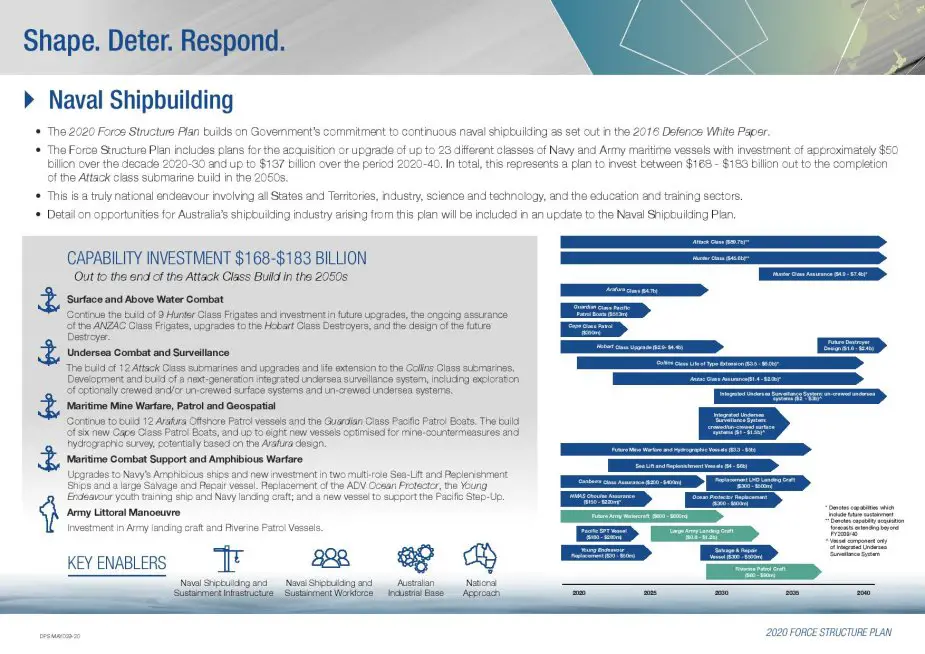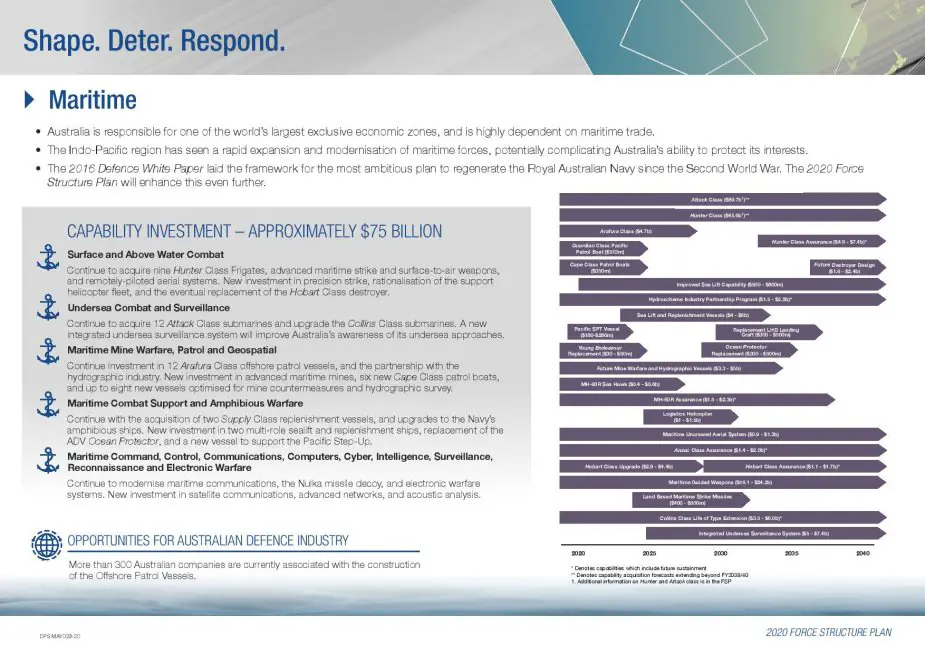Breaking news
Australia intends to significantly increase military spending.
On July 1, 2020, the Australian government approved the so-called Defense Strategic Update and the 2020 Force Structure Plan, which provide for Australia spending a total of 575 billion in defense spending over the coming decade.
Follow Navy Recognition on Google News at this link
 HMA Ships Canberra, Anzac, Sirius, Parramatta and Melbourne operate together off the Australian East Coast during Exercise OCEAN RAIDER. (Picture source: Royal Australian Navy)
HMA Ships Canberra, Anzac, Sirius, Parramatta and Melbourne operate together off the Australian East Coast during Exercise OCEAN RAIDER. (Picture source: Royal Australian Navy)
The Strategic Update sets out the challenges in Australia’s strategic environment and its implications for Defence planning. It provides a new strategic policy framework to ensure Australia is able – and is understood as willing – to deploy military power to shape our environment, deter actions against our interests and, when required, respond with military force.
On the naval side, the Strategic Update covers both Naval Shipbuilding and Maritime capabilities:
 Fact Sheet Naval Shipbuilding Capabilities (Picture source: Royal Australian Navy)
Fact Sheet Naval Shipbuilding Capabilities (Picture source: Royal Australian Navy)
Naval Shipbuilding
• The 2020 Force Structure Plan builds on Government’s commitment to continuous naval shipbuilding as set out in the 2016 Defence White Paper.
• The Force Structure Plan includes plans for the acquisition or upgrade of up to 23 different classes of Navy and Army maritime vessels with investment of approximately $50 billion over the decade 2020-30 and up to $137 billion over the period 2020-40. In total, this represents a plan to invest between $168 - $183 billion out to the completion of the Attack class submarine build in the 2050s.
• This is a truly national endeavour involving all States and Territories, industry, science and technology, and the education and training sectors.
• Detail on opportunities for Australia’s shipbuilding industry arising from this plan will be included in an update to the Naval Shipbuilding Plan.
 Fact Sheet Maritime Capabilities (Picture source: Royal Australian Navy)
Fact Sheet Maritime Capabilities (Picture source: Royal Australian Navy)
Maritime
• Australia is responsible for one of the world’s largest exclusive economic zones and is highly dependent on maritime trade.
• The Indo-Pacific region has seen a rapid expansion and modernisation of maritime forces, potentially complicating Australia’s ability to protect its interests.
• The 2016 Defence White Paper laid the framework for the most ambitious plan to regenerate the Royal Australian Navy since the Second World War. The 2020 Force Structure Plan will enhance this even further.


























